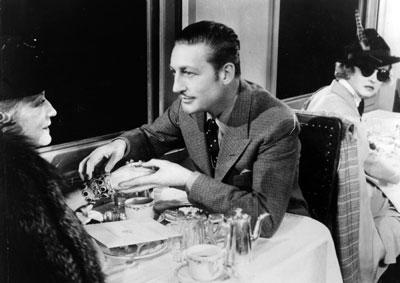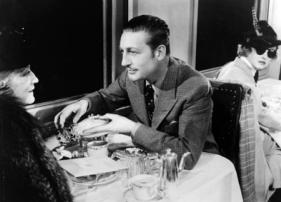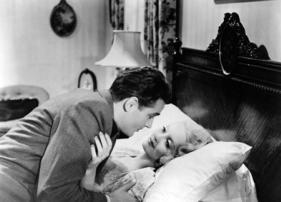Directed by William Dieterle
Warner Bros. Pictures, Inc. Producer: Henry Blanke. Screenwriter: Brown Holmes, based on the novel The Maltese Falcon by Dashiell Hammett. Cinematographer: Arthur Edeson. Editor: Warren Low. With: Bette Davis, Warren William, Alison Skipworth, Arthur Treacher, Marie Wilson. 35mm, b/w, 74 min.
Warner Bros. infamous, second adaptation of Dashiell Hammett’s The Maltese Falcon, just five years after its first, Satan Met A Lady features a number of arguably eccentric changes to Hammett’s classic Sam Spade mystery, including a name change for Spade (Ted Shane) and the substitution of a jewel-filled ram’s horn for The Maltese Falcon itself. Aside from these and other story tweaks, introduced by screenwriter Brown Holmes, who contributed to the 1931 adaption, Satan Met A Lady is also memorable as the production, along with subsequent The Golden Arrow, that finally brought simmering tensions between Bette Davis and Warner Bros. to a head.
Having won her first Academy Award in March 1936 for her performance in Dangerous (1935), Davis was hoping for projects to match her now widely recognized talents going forward. The role of Valerie Purvis, the Brigid O’Shaughnessy character in the novel, in a hastily concocted remake, even one helmed by William Dieterle, didn’t meet with Davis’ expectations. After initially refusing to show up on the Satan Met A Lady set, she was suspended by Warner Bros. and later relented. On the film’s release, The New York Times reviewer wrote that after viewing the film “all thinking people must acknowledge that a “Bette Davis Reclamation Project” (BDRP) to prevent the waste of this gifted lady’s talents would not be a too-drastic addition to our various programs for the conservation of natural resources.”
Be that as it may, Satan Met A Lady has its charms as Warner Bros stab at concocting a mystery, with comedic overtones, in the vein of The Thin Man series.
Paul Malcolm
Preserved in cooperation with Warner Bros. and Library of Congress Packard Campus for Audio-Visual Conservation from the original 35mm nitrate picture and track negatives and a 35mm nitrate composite print. Laboratory services by The Stanford Theatre Film Laboratory, Audio Mechanics, DJ Audio. Special thanks to: Ned Price; and Patrick Loughney, Gregory Lukow, Mike Mashon, Rob Stone, Ken Weissman, George Willeman, and members of the Library of Congress Moving Image Section and Film Laboratory staffs.






 Mobile Navigation
Mobile Navigation



